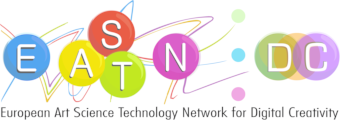This paper discusses challenges and issues that arise in terms of the overall digitalization of culture in the social media landscape through a theoretical study approach on privacy, freedom of expression and the right to be forgotten (Brock, 2016). It focuses on current social changes and concerns about the pandemic, the extensive periods of lockdown and the way in which all these affected the museum digital landscape. During the pandemic most of the museums’ functions, as cultural institutions, within the physical space of their exhibitions and communication with visitors have been paused or even silenced. To cope with this new reality museums went fully online. Social networking platforms, as a remarkable communication tool for museums, is not something new (Marakos, 2014; Padilla-Meléndez & Del Águila-Obra, 2013). It is the intensity that is unprecedented. Online tours, online activities including participatory actions, encouraged remoted audience to interact with museums. Museums have employed a wider range of platforms, such as TikTok and YouTube, and have extended their activities on their existing Facebook, Twitter and Instagram accounts. Posts, tweets, photos e.tc., kept coming and going, allowing personal information to remain within the Internet in perpetuity (Myers, 2014). Personal data kept entering and exiting the museum online doors and data tanks, in a more intensive way and within a more increased amount turning them into big (personal) data.
The ongoing enhancement of activity and interactivity at the social media realm can leave both museums and audience exposed and challenged. Several questions arise in relation to the increased risk of disclosing personal data through the current and future digital practices of the online museum prompting visitor participation. For example: What happens if I no longer want my photos to be online exposed? Is the “I upload therefore I consent” argument ethically and legally enough? What happens to the videos that museum audiences have uploaded in response to museum invitations to recreate scenes from paintings featuring their bodies, home interiors and household items, as with the case of the Getty Museum? In addition, when personal images are mis-used online,is it the social network or the individual that would be responsible for removing the image (Geogiades, 2020)?
The E.U. law right to be forgotten is only one path to data protection, yet its workings are not so widely known and discussed, especially referring to museum digital landscape. As Guadamuz argues (2017:3 ) the so called “right to be forgotten” (RTBF) relies on the idea that one has the legal right to remove information about oneself that is accessible online and that is potentially damaging to one’s enjoyment of a private life, or more accurately, to have it de-listed from search engine results.
This paper aims to discuss the current legal frame along with the implications and concerns that arise when employing the right to be forgotten and the GPDR EU law as a set of mandatory rules, focusing on the museum digital environment while shifting the attention to data controllers and data subject. The latter could reveal new perspectives and practices for the stakeholders to consider.
Keywords: Museums, social media, digital audience, right to be forgotten
References:
Brock, G. (2016). The right to be forgotten: privacy and the media in the digital age. London & New York: I.B. Tauris Ltd.
Georgiades, E. (2020). Down the Rabbit Hole: Applying a Right to Be Forgotten to Personal Images Uploaded on Social Networks, 30 FordhamIntell. Prop. Media &Ent. L.J. 1111. Available at: https://ir.lawnet.fordham.edu/iplj/vol30/iss4/2
Guadamuz, A. (2017). Developing a Right to be Forgotten. In EU Internet Law (pp. 59-76). Springer, Cham.
Marakos, P. (2014). Museums and social media: Modern methods of reaching a wider audience. Mediterranean Archaeology & Archaeometry, 14(4), 75-81.
Myers, C. (2014). Digital immortality vs.“The right to be forgotten”: A comparison of US and EU laws concerning social media privacy. Revista Română de Comunicare şi Relaţii Publice, 16(3), 47-60.
Padilla-Meléndez, A., & Del Águila-Obra, A. R. (2013). Web and social media usage by museums: Online value creation. International journal of information management, 33(5), 892-898.
Back
“Reflections: Bridges between Technology and Culture, Physical and Virtual”
is supported by:






